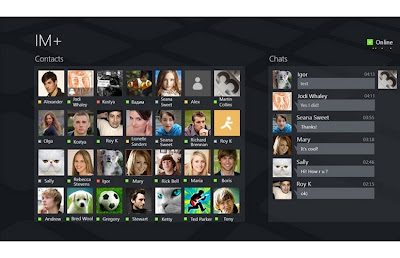http://blog.laptopmag.com
This time last year, the death knell was sounding loudly for Research in Motion. Its market share was in steep decline, its product lineup was stale, and all it had to show for its future was a prototype and the promise of an often-delayed new operating system. Just 12 months later, the company has changed its name to BlackBerry, debuted a new OS in BlackBerry 10 and launched two new smartphones, the BlackBerry Z10 and Q10. A third device, the
BlackBerry Q5, is set to hit emerging markets later this year.
During his keynote speech at BlackBerry Live in Orlando, CEO Thorsten Heins said the company was well on its way to its most successful year yet. While he didn’t say that BlackBerry is back in the driver seat for the mobile market, Heins believes his company is well on its way. BlackBerry has also said its latest smartphones have resulted in the most successful launches in company history. But is that really the case?
MORE: BlackBerry CEO Talks BB10, Future of Mobile Computing
A report out of Goldman Sachs released in March said that BlackBerry Z10 sales in the U.S. had been disappointing. Citigroup, at the same time, indicated that less than 5 percent of stores that were stocking Z10’s had sold out of the handsets, despite the fact that most stores only had 12 to 24 units on hand.
What’s more, Detwiler Fenton & Co. issued a report in April stating that retailers were seeing more returns of BlackBerry Z10 devices than sales. However, BlackBerry responded sharply to the report, stating that it was false and that sales of BlackBerry 10 devices in both the U.S. and international markets were in line with expectations.
More recently, the analyst group IDC,
reported a steep drop in BlackBerry’s market share from 6.4 percent in the first quarter of 2012 to 2.9 percent in the first quarter of 2013. That’s a decrease from 9.7 million units shipped to 6.3 million units shipped. IDC, however, pointed out that many of those units were older BlackBerry 7 devices.
MORE: BlackBerry Z10 (AT&T) Review
Still, not all analysts are down on BlackBerry.
According to a report from Barron’s earlier this month, Macquarie Capital’s Kevin Smithen indicated his belief that the BlackBerry Q10 would be a bigger success than the Z10.
According to BGR, RBC Capital Markets’ Mark Sue offered a more guarded stance on BlackBerry, stating that the company had essentially bought itself some time to “rebuild its business and develop new enterprise and consumer services to offset the shift away from its mandatory services model.”
And despite reporting a drop in BlackBerry device shipments and market share, IDC noted that The group also stated that the company moved more than 1 million BlackBerry 10 units in the same quarter. That, as IDC pointed out, is a significant milestone for BlackBerry.
But if you follow Heins’ line of thought, the future of BlackBerry isn’t beholden to smartphones and tablets. Since he began talking about BlackBerry 10 at last year’s BlackBerry World conference, Heins has repeatedly stated that he sees a future where the operating system is more than a means to power a smartphone or tablet, and instead will serve as a, “mobile computing platform.” During his keynote Heins displayed exactly what he meant by that when he rolled out a Bentley running a version of BB10. The integration is made possible using BlackBerry’s QNX software, which is already used by 60 percent of automakers.
It’s not just autos that BlackBerry 10 could find its way into, though. Heins said the company is also looking to target the medical industry. It’s this kind of forward thinking that IDC analyst William Stofega said he is looking forward to.
“I’m glad to see finally that we are starting to see the word ‘platform,’ and that they are going to market with their advantages with BB10 and cars,” Stofega said. “It seems like a lot of the things that were said and promised are starting to come to fruition. The transition is still going on, but I get the sense that they are stable and able to deliver.”
Still, for now, BlackBerry has to lean on its smartphone sales to make its keep. And while that will be a challenge for the company, Stofega said he believes the company is cognizant of the difficulties ahead and is willing to meet them head on. BlackBerry also has the benefit of its strong brand recognition in emerging markets such as South America and Asia.
In addition to the low-cost BlackBerry Q5, the company also announced that its
BlackBerry Messenger app will be made available for Android and iOS. The reason BlackBerry is still incredibly popular in markets like South America and Asia is because of how inexpensive BBM is compared to texting. However, it’s possibe that by making the service available for Android and iOS, BlackBerry is giving users less of an incentive to buy BlackBerry devices.
Another possible setback for BlackBerry is that despite the fact that BlackBerry and its U.S. carrier partners announced that the
Q10 will be available later this summer, they haven’t said exactly when or for how much. That means BlackBerry’s fortunes in the U.S. will continue to rely on the Z10 for now.
If BlackBerry’s stock price is any indication of what the market thinks of the company’s announcements, the future is still rather cloudy. Following the company’s reveal of BlackBerry 10 and its Z10 and Q10 smartphones, its stock price rose from a low of $11.40 to a high of $16.59 at the start of May. Two days after Hein’s keynote at BlackBerry Live , however, the company’s stock price dropped off, closing at $14.69 on May 16.
We’ll learn much more about BlackBerry’s status when the company announces its quarterly earnings later this month. For now, though, the speculation about the strength of the company’s comeback will continue.













